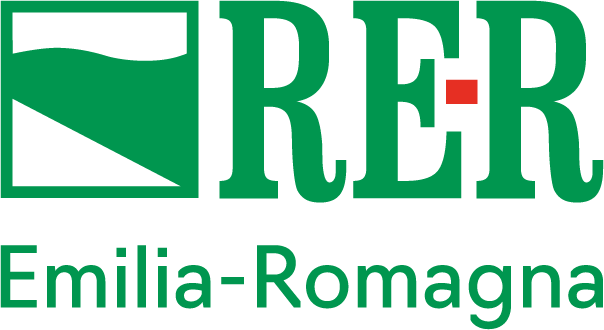3D geological modelling
The technological development of sofware suitable for displaying in 3D subsurface geology (thickness of geological formations, faults, folds ...) allowed the geological community to have available new tools of representation and communication of their interpretations of the subsurface.
The creation of a model in three dimensions starts from the geological map of the surface, from the geognostic tests (boreholes, seismic lines, CPT ...) made in a territory to discover what lies underground. Geologists have always represented the development of geology in three dimensions through the construction of geological-stratigrafic cross sections, which together with the geological surveys enable the reconstruction of surfaces and volumes of what lies beneath us. A great work of interpretation is always at the base of a good 3D model that despite being made today by dedicated software, needs the validation from the knowledge of the geologist. The rise in the last decade of sofware that, from data input, model and create representations of the subsurface, has provided a new tool for communication and faster and spectacular representation of what is below us. The model generated by the computer should be always interpreted correctly and in the right way.
Geomol european project: a new representation of the subsurface geology

In Emilia Romagna the representation of the subsurface of the Po Valley by 3D modelling software was initiated thanks to the european collaboration which starts from the project Geomol (Alpine program space territorial cooperation 2007-2013 .
The Emilia-Romagna Geological Area in collaboration with other Italian partners (the Lombardia region and ISPRA) has been able to interpret and model the subsurface of the Italian pilot area Brescia-Mantua-Mirandola" thanks to the data provided by ENI-AGIP (seismic lines and wells ) to which are added the data cataloged in the regional geognostic tests database.
The Geomol team have developed a visualization software that allows viewing in 2D and 3D the italian pilot area and all the areas located in the partecipating countries (Germany, Switzerland, Austria, France). The developed geological model of the subsurface is comparable and interoperable in all participating countries.
For the area Brescia-Mantua-Mirandola of the Po Valley, the following maps were made from the 3D model:
- Maps of the isobaths of 15 horizons
- maps of the estimate of the temperature at various depths and geothermal potential
- isotherms map
- maps of geothermal potential temperature-horizons
- maps of active faults and seismogenic sources
The project provides a basis for a new approach in the study of subsoil, shared at European level with other countries who are facing the same issues, important for planning the use of natural resources (water, hydrocarbons, geothermal energy) and geological hazards (earthquakes,subsidence,marine ingression.
3D Geological modelling of the coastal area in Emilia-Romagna, Italy
The study of coastal processes such as subsidence, shoreline retreat, salt water intrusion must be based on a thorough knowledge of the subsurface geology that now can be solved through the 3D modelling. Detailed three-dimensional geological models have been created thanks to the experience gained over the past twenty years and the constant implementation of databases belonging to Geological, Soil and Seismic Survey (SGSS). These models represent the stratigraphic-sedimentological framework of Quaternary succession of the coastal region of Emilia-Romagna.
Case studies
In order to test the 3D modelling advantages, several studies, involving the Pleistocene-Holocene succession and dealing with diversified geological topics (hydrogeology, geotechnical, coastal dynamic, etc.) have been launched.
In the Po delta area the correlation between ground data (boreholes, CPTU) and sea-bottom data (corings and very high-resolution chirp sonar profiles, Correggiari et al., 2012) was investigated (Figure 1). As a result the reconstruction of the architecture of the different Po delta lobes from land to sea has been improved and their internal features has been defined through sedimentological analysis of lithological and seismic facies.
In this sector has also been tested, with excellent results, the potential of the interpolation of the numeric data; as example, a three-dimensional distribution of the Soil Behavior Type values, calculated from the penetration tests (Robertson, 2010), was processed.
Another case study regards the phreatic coastal aquifer: the modeling approach allows to appreciate the three-dimensional geometries and internal lithological variations. In the coastal area of Lido di Classe, available piezometric data and electrical conductivity values (Bonzi et al., 2010) were processed and the distribution of fresh and salt water and the geometry of their interface were mapped, providing useful information for monitoring salt contamination of the aquifer.
Within the project of artificial water recharge of the Marecchia alluvial fan (Severi et al., 2014), was conducted an extreme detailed geological model, in order to trace the stratigraphic surfaces close to the Apennine margin. This has led to the definition of the gravelly bodies, which constitute the aquifers and the silty-clay bodies which act as aquitards. The geological model can be easily translated into a format useful for the most common hydrogeological modeling tools.
Conclusion
The results of different experimental studies, some of which are still ongoing, show that the modeling approach in the study of the geology of the Emilia-Romagna coast provides important information and a solid foundation for further studies concerning the coastal sedimentary dynamics, management of coastal risk, hydrogeology and geotechnical engineering.
The geological modeling has allowed an excellent integration of heterogeneous data, greater control and detail in the reconstruction of the subsurface geology, simplifying the stratigraphic land-sea correlation.
The outputs of numerical data processing within the geological model were encouraging and open new possibilities for the production of thematic and technical maps.
